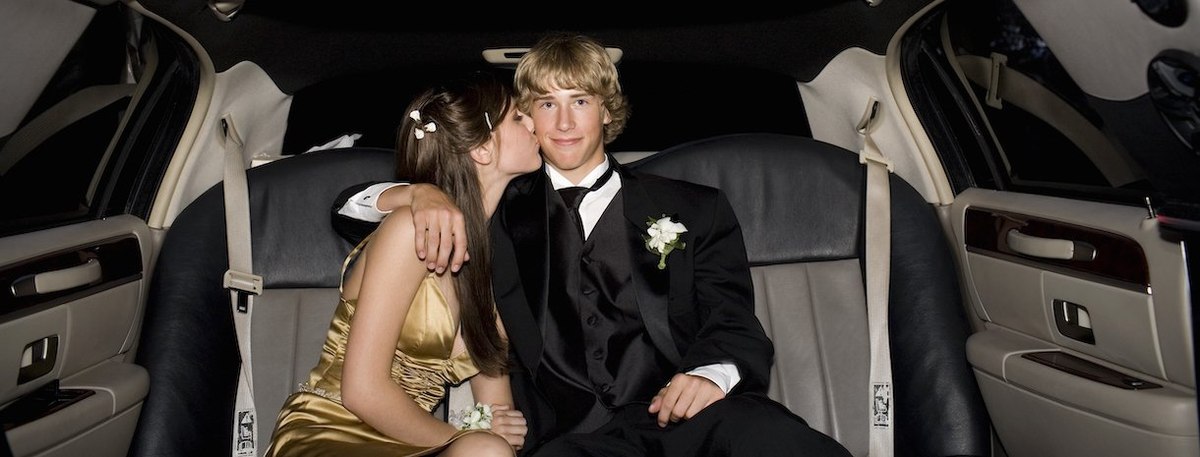Dances are a fixture of most Americans' high school experience: Two-thirds of U.S. adult citizens in a new YouGov survey say they attended one growing up, and half attended prom. For majorities of Americans who attended, prom night included exchanging corsages or boutonnieres, going out to dinner, slow dancing, and going to an after-party. A little under half say they drank alcohol on the day of prom, and about one in four say they had sex. Most Americans who went to a high school dance say it was at least somewhat important for them to have a date and a majority who went to prom say they went with one.
The most popular high school dances
Two-thirds of Americans (68%) say they attended a high school dance growing up, including similar shares of Americans from different age groups. About half of Americans (52%) attended a prom and slightly fewer (44%) attended a homecoming dance. About one in four attended a Sadie Hawkins dance (25%) or a winter formal (28%), including higher shares among adults under the age of 45.
Among people who attended prom, most say their high school typically held it at school (57%) rather than away from school (42%); 2% were unsure. In terms of how much it cost them to attend, 35% say they spent $100 or more on prom, including on their ticket, attire, and transportation.
Two-thirds of Americans who attended a high school dance (67%) say it was very or somewhat personally important for them to attend with a date. And on prom night, most did. About eight in 10 adults who attended their high school prom (79%) say they went with a date at least once; 25% say that at least once they attended without a date. (Some attended prom more than once.)
Why Americans do and don't attend high school dances
Why did Americans choose to attend high school dances growing up? When asked to select all that apply from a list of reasons, the largest share of Americans who attended a high school dance (62%) say to socialize with friends. About two in five say to dance and enjoy the music (44%), to create memories (41%), or to be someone's date (38%).
Reasons for attending high school dances vary by gender and age. Men under 45 are more likely to say they attended to meet someone special and less likely to say they attended to socialize or dance. Women who are 45 or older are especially likely to say they attended to dance or to create memories. Women, in general, are more likely than men to say one reason they attended was to wear special attire — though men under 45 are far more likely than older men to say this (25% vs. 9%).
The survey also asked people who never attended a high school why they did not. The largest share — 35% — say they didn't like dances, and about one in four say they didn't attend because of each of the following: they didn't have a date (23%), had other priorities (23%), or had social anxiety (23%).
Prom night experiences
Most people have positive memories of high school dances, with a majority who attended one saying they either loved (24%) or liked (52%) them. Just one in five either disliked (15%) or hated (5%) them.
What do Americans recall doing on the day of their prom? Before prom, most ate dinner at a restaurant and gave (66%) or received (70%) a corsage or boutonniere. About half of women (52%) say they had a pre-dance beauty appointment. One-third of attendees (34%) say they rode in a limousine.
Most people who went to prom say they slow-danced with someone there (84%), while far fewer — 27% — say they dirty-danced or ground with someone. A majority say they attended a prom after-party (60%) and about half attended an after-dance event (51%). Two in five prom attendees say they drank alcohol (42%); far fewer say they did drugs (16%) or got in trouble with the police (15%). A little more than one-quarter — 29% — say they had sex on the day or night of prom, including 39% of adults under 45 and just 21% of older adults.
Dance debates
The survey also asked about a variety of common debates surrounding prom, including ones about promposals, dress codes, and chaperones.
More Americans have positive than negative feelings about "promposals," or elaborate ways of asking someone to prom, though opinions differ by age. Overall, 47% of Americans say they love or like promposals, while 28% hate or dislike them. Younger adults are far more likely than older Americans to view promposals favorably.
What do Americans think about dress codes for high school dances? Most people (61%) think students should be required to dress in modest attire for dances and about half (52%) believe students should be required to dress in attire that matches expectations for their gender, such as dresses for girls and suits for boys; 35% disagree. There is more division on whether students should have to dress in formal attire: 46% say they should have to and 37% say they should not have to.
The vast majority of Americans (88%) believe that chaperones are at least somewhat necessary for high school dances, including 44% who say they are very necessary. Adults under 45 are far less likely than older Americans to believe chaperones are very necessary (28% vs. 57%).
See the results for this YouGov poll
Methodology: This poll was conducted online on May 4 - 7, 2023 among 1,000 U.S. adult citizens. Respondents were selected from YouGov’s opt-in panel using sample matching. A random sample (stratified by gender, age, race, education, geographic region, and voter registration) was selected from the 2019 American Community Survey. The sample was weighted according to gender, age, race, education, 2020 election turnout and presidential vote, baseline party identification, and current voter registration status. Demographic weighting targets come from the 2019 American Community Survey. Baseline party identification is the respondent’s most recent answer given prior to March 15, 2022, and is weighted to the estimated distribution at that time (33% Democratic, 28% Republican). The margin of error for the overall sample is approximately 4%.
Image: Getty (Charles Gullung)











